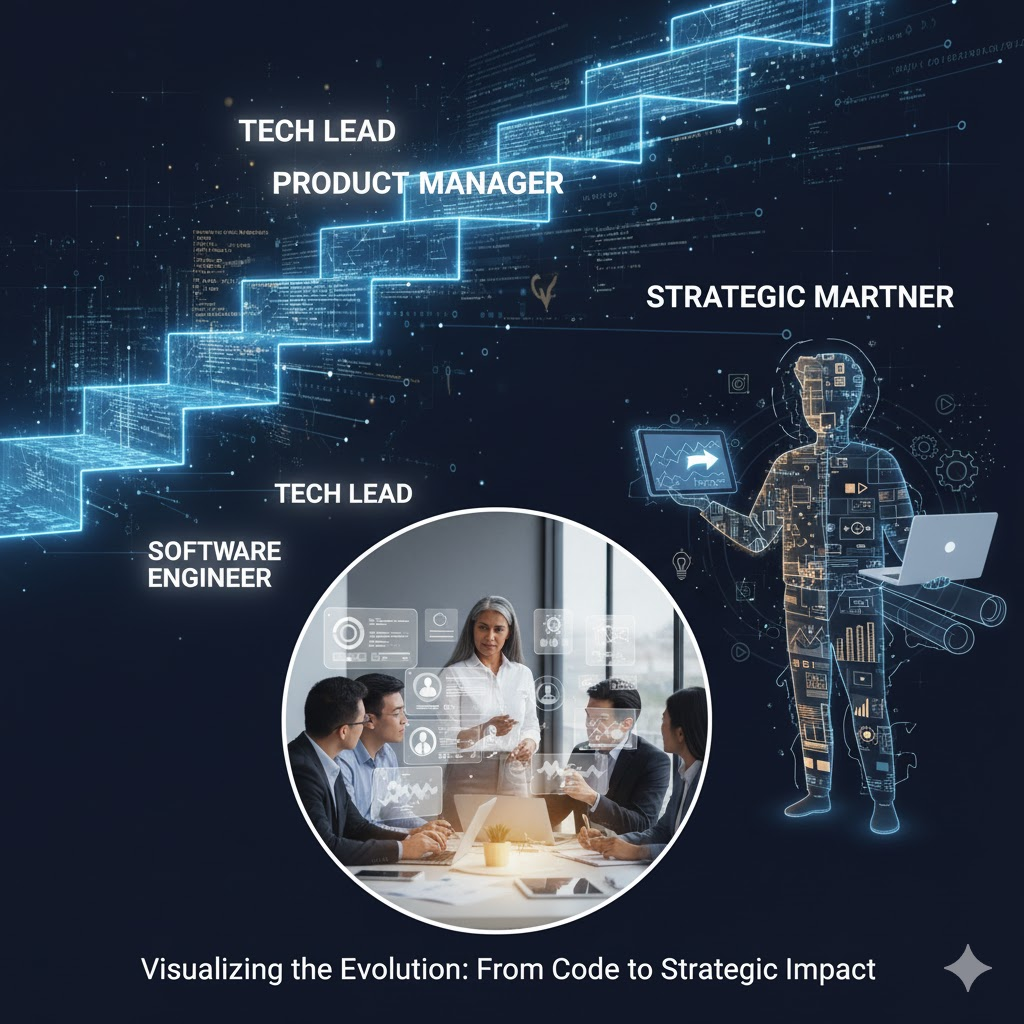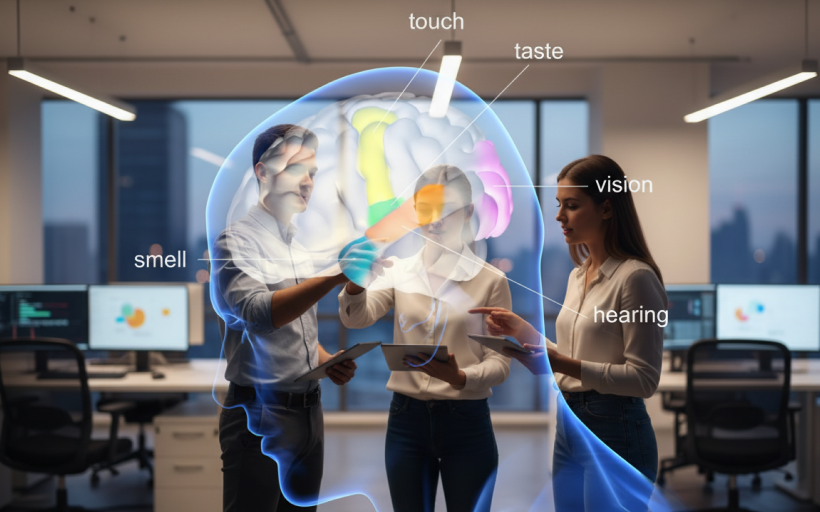Blog

The Business Side of Software Development Engineer
November 14, 2025
.avif)

Introduction
Most software engineers begin their careers laser focused on writing perfect code.They build something flawless , the code compiles, tests pass, the UI gleams and then waits for users to flood in. But when you check the data it crickets. Some of your technically brilliant features might never even reach the user or worse, they launch and go unnoticed.That’s the moment many engineers realise: perfect code doesn’t guarantee real world success.
Let’s take an example to understand: A popular to-do list app. Despite strong download numbers, user engagement was low. People installed it, used it once or twice, then abandoned it. A detailed case study found that by introducing better experience features (habit tracking, reminders, progress visualization) the app improved “stickiness” by 50%, and daily active usage increased by 35%. asoworld.com
In other words: the code and core functionality were fine but the product didn’t connect with user behaviour and needs. That’s where product thinking comes in. It’s what separates an engineer who codes from an engineer who creates impact.
A delivery mindset says:“I’ll finish this feature by Friday.”
A product mindset says:“Will this feature actually help the user? Is there a simpler or faster way to deliver the same value?”
- In the example above, the engineers shifted from “Let’s build smart features” to “Let’s build what the user actually wants: simple, meaningful progress”.
This shift is subtle but powerful. It transforms SDEs into partners in product success, not just executors of tasks.

How Product Thinking Drives Better Business Results
Product led organizations, outperforming sales/marketing driven ones by 40% in growth and 30% in retention, achieve this by aligning engineering with business outcomes. When Software Development Engineers (SDEs) understand how their work impacts metrics like conversion, engagement, and churn, they become strategic partners.
With product thinking, you can:
- Mitigate superfluous features: Focus on essential functionality, preventing resource drain.
- Enhance collaboration: Foster shared understanding across product, design, and development, leading to cohesive solutions.
- Expedite impactful solutions: Prioritize and deliver features that genuinely drive results through agility.
Ultimately, product thinking transforms coding into a proactive business strategy, making engineering a driving force for innovation, customer satisfaction, and sustainable growth.
Key Traits of a Product Minded Software Engineer
A product minded engineer considers the impact of their work on both users and the business, while focusing on writing code.
- Understands the User
They try to see the product from the user’s point of view and care about solving real problems. - Knows the Business Goal
They know why a feature is being built and how it supports the company’s goals.
- Focuses on Impact
The true measure of success lies in the impact of one's work, rather than merely completing assigned tasks.
- Works Well with Others
They talk with designers, product managers, and other teammates to build better solutions. - Balances Speed and Quality
They make smart trade offs knowing when to build fast and when to improve the code. - Takes Ownership
They treat every feature like it’s their own product and follow it through from idea to launch.

Common Pitfalls When Developers Ignore Product Thinking
Ignoring product thinking disconnects engineers from the "why," leading to features that function but lack impact.

Here are some common traps developers fall into:
- Overengineering
Engineers often build perfect, complex solutions for problems users don't even have.
Lesson: Ship small, learn fast. The best code is the one that actually helps someone. - Building in Isolation
Without proper context, innovation becomes a guessing game. Developers who don't communicate with product or design teams risk building what they perceive users need, rather than addressing actual user requirements.
Lesson: Great products are built in conversations, not silos. - Lack of Prioritization
Without understanding business goals, engineers may spend time on what’s “technically cool” instead of what moves the needle.
Lesson: Focus on high impact solutions rather than simply difficult problems. - Miscommunication Across Teams
Misalignment between technical decisions and product outcomes leads to friction. This results in longer meetings, slower releases, and increased frustration for everyone involved.
Lesson: Prioritize communicating in terms of outcomes, not just technical details.
- No Real Feedback Loop
Releasing software without user feedback is akin to coding while blindfolded. Without understanding user sentiment and behavior, opportunities for iteration and improvement are lost.
Lesson: Every line of code is a hypothesis test in the real world.
Ultimately, developers who disregard product thinking still produce code, but it lacks impact. The distinction between a good engineer and a great one often lies in this: great engineers not only build things correctly, but they also build the right things.
Actionable Ways to Develop Product Thinking as an SDE
This business first mindset really gets you thinking about:
- User Experience (UX): How will folks actually feel and interact with your software? Is it simple, fast, and even fun to use? Knowing the business goals often highlights why a smooth and positive user journey is so crucial.
- Customer Value: What specific headaches does your software solve for customers? How does it make their lives or work better? When you directly link your code to the good it does, you focus on the features and functions that truly matter.
- Return on Investment (ROI): How does all your engineering effort help the company make more money, grab more market share, or run things more efficiently? Being aware of the financial side of your work helps you make smart tech decisions and use resources wisely.
- Scalability and Maintainability: These might seem like just technical things, but they have huge business implications. Scalable solutions can handle future growth without a ton of re engineering, saving time and cash. And maintainable code cuts down on long term running costs and lets you adapt quickly to changing business needs.
- Strategic Alignment: Does your project fit in with the company's big-picture vision and long term plans? When you understand the "why" behind the "what," you can make better choices about how you build things, what features to prioritize, and even suggest different solutions that serve the business even better.
The more you practice this mindset, the more natural it becomes to connect engineering with impact.

Career Growth: Why Product Thinking Makes You Stand Out
Product minded engineers distinguish themselves by their ability to think beyond execution, linking code to value, technology to business, and ideas to users.
This mindset helps in every stage of your career:
- At the entry level, prioritize proactive effort and thoughtful approaches over mere task completion.
- As you grow, you become a go to person who understands both the technical and product side.
- In leadership, this mindset prepares you for roles like Tech Lead, Product Engineer, or even Product Manager, where strategic thinking is key.
Engineers who develop software and contribute to product success are highly valued by companies.
How MeritShot Helps SDEs Build Product Thinking
At MeritShot, our mission extends beyond just teaching coding. We aim to sculpt engineers who possess a product creator's mindset.
Our projects are rooted in real world problems, not just abstract coding challenges. You'll delve into the "why" behind every feature, analyze user needs, and measure outcomes, just like a professional product team.
Through hands on product simulations and cross team collaboration, you'll learn to balance technical depth with crucial business awareness. Post project mentorship sessions provide valuable insights, helping you reflect on your choices and their impact on users.
This methodology fosters a habit of looking beyond the code, connecting every technical decision to its user value and business impact.
Upon completion, you won't just be developing software; you'll be delivering tangible outcomes, prepared for roles such as Product Engineer, Tech Lead, or even Product Manager.

CTA
Ready to level up from writing code to building products?
Join the next cohort at MeritShot and start thinking like a product maker.
Click [meritshot] to learn more and book your free intro session.
Conclusion: Building Software That Serves Business Goals
At the heart of every great product lies one simple idea that solves a real problem. Product thinking helps you focus on that purpose.
As an engineer, it's super important to remember that your code isn't just about the techy stuff; it's about the experience, how easy it is to use, and the real value it brings. When you genuinely get what the business is trying to achieve with your work, you naturally start building software that makes a truly awesome and meaningful impact. This understanding totally changes your role from just a coder to a strategic player, where every line of code is a smart move towards making the whole company more successful.
By adopting this all encompassing view, engineers go way beyond just checking off requirements. They become proactive problem-solvers, innovators, and key partners in the business's success, ultimately creating software that's not only technically solid but also super important strategically. That's how you evolve from a developer to a creator, someone who doesn’t just build apps, but builds outcomes.

FAQs
Q1. What is “product thinking” for a software engineer?
A: Product thinking means going beyond “How do I build this?” and asking “Why are we building this? Who will use it? What outcome do we want?”
Q2. Why should a software engineer care about product thinking?
A: Because software alone isn’t enough when you link your code to user problems and business goals, your work becomes more valuable, and you stand out.
Q3. What are common mistakes when developers ignore product thinking?
A: Typical pitfalls include building features no one uses, working in isolation from product/user context, prioritizing technical complexity over user value.
Q4. How can I start developing product thinking today?
A: Start by asking the “why” behind every task, use the product yourself, align with product/design teams, and reflect on outcomes not just deliverables.
Q5. Will product thinking help my career growth?
A: Yes. Engineers who bring product insight often become contributors, move into leadership roles, and differentiate themselves from purely technical peers.









.png)














